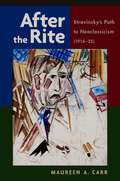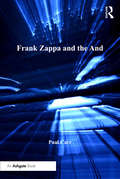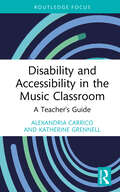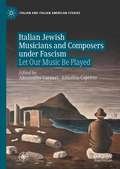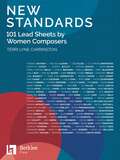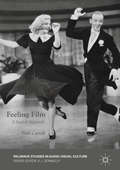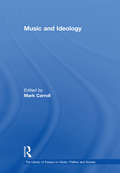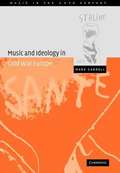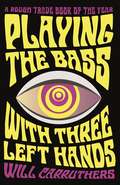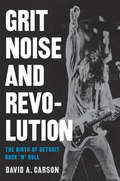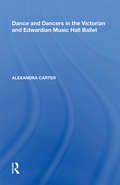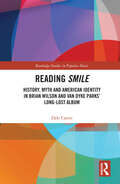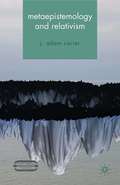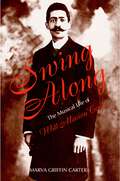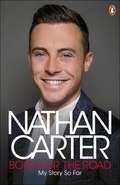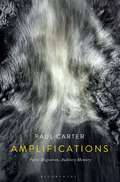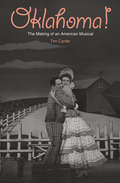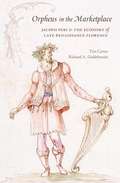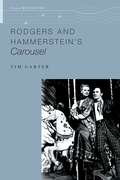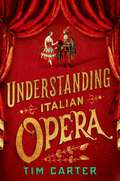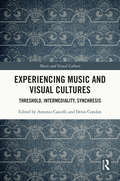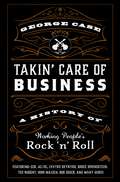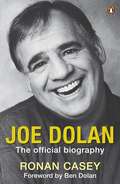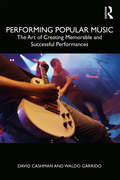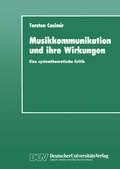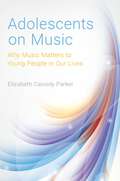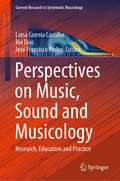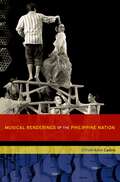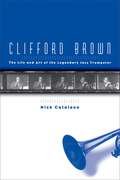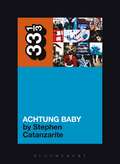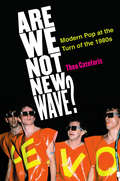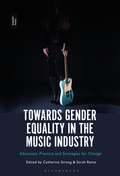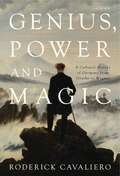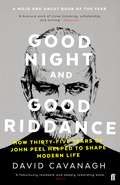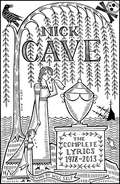- Table View
- List View
After the Rite: Stravinsky's Path to Neoclassicism (1914-1925)
by Maureen A. CarrThe riot that erupted during the 1913 debut of Igor Stravinsky's The Rite of Spring at the Théâtre des Champs-Élysées in Paris has long been one of the most infamous and intriguing events of modern musical history. The third in a series of works commissioned for Sergei Diaghalev's famed Ballets Russes, the piece combined disjunct tonalities, provocative rhythms, and radical choreography that threw spectators and critics into a literal fury. In the century following its premiere, The Rite of Spring has demonstrated its earth-shattering impact on music and dance as well as its immortalizing effect on Stravinsky and his career. Having gained international attention by the age of 30, what direction could Stravinsky's path forward take after the momentus events of 1913? After the Rite: Stravinsky's Path to Neoclassicism (1914-1925) traces the evolution of Stravinsky's compositional style as he searched for his own voice in the explosive musical world of the early 20th century as he responded to harsh criticisms of his work. Throughout the book, author Maureen Carr presents new transcriptions and sophisticated analyses of selected musical sketches to show the genesis of Stravinsky's musical ideas as he forayed into surrealism, classicism, and abstraction to develop his signature Neoclassical style. Exploring these annotated compositional experiments--such as the earliest evidence of Stravinsky's appropriation of the "rag idiom" and the development of his so-called "sound blocks"--After the Rite provides new insight into how Stravinsky challenged and guided the musical developments of the decade after that legendary Paris premiere. Enlightening visual metaphors, such as the contemporary paintings of Paul Klee and those of the Russian futurists, supplement discussion of the musical sketches throughout, offering a comprehensive artistic context for Carr's unprecedented and rigorous examination. A treasure trove of outstanding material for scholars, musicians, students, and general readers alike, After the Rite offers a much-needed delineation of the concept of musical neoclassicism. Maureen Carr's innovative and detailed examination of the metamorphosis of Igor Stravinsky's compositional style after The Rite of Spring is an invaluable contribution to the literature concerning this iconic 20th century composer.
Frank Zappa and the And (Ashgate Popular and Folk Music Series)
by Paul CarrThis collection of essays, documented by an international and interdisciplinary array of scholars, represents the first academically focused volume exploring the creative idiolect of Frank Zappa. Several of the authors are known for contributing significantly to areas such as popular music, cultural, and translation studies, with expertise and interests ranging from musicology to poetics. The publication presents the reader with an understanding of the ontological depth of Zappa's legacy by relating the artist and his texts to a range of cultural, social, technological and musicological factors, as encapsulated in the book's title - Frank Zappa and the And. Zappa's interface with religion, horror, death, movies, modernism, satire, freaks, technology, resistance, censorship and the avant-garde are brought together analytically for the first time, and approached non chronologically, something that strongly complies with the non linear perspective of time Zappa highlights in both his autobiography and recordings. The book employs a variety of analytical approaches, ranging from literary and performance theory, 'horrality' and musicology, to post modern and textually determined readings, and serves as a unique and invaluable guide to Zappa's legacy and creative force.
Frank Zappa and the And (Ashgate Popular and Folk Music Series)
by Paul CarrThis collection of essays, documented by an international and interdisciplinary array of scholars, represents the first academically focused volume exploring the creative idiolect of Frank Zappa. Several of the authors are known for contributing significantly to areas such as popular music, cultural, and translation studies, with expertise and interests ranging from musicology to poetics. The publication presents the reader with an understanding of the ontological depth of Zappa's legacy by relating the artist and his texts to a range of cultural, social, technological and musicological factors, as encapsulated in the book's title - Frank Zappa and the And. Zappa's interface with religion, horror, death, movies, modernism, satire, freaks, technology, resistance, censorship and the avant-garde are brought together analytically for the first time, and approached non chronologically, something that strongly complies with the non linear perspective of time Zappa highlights in both his autobiography and recordings. The book employs a variety of analytical approaches, ranging from literary and performance theory, 'horrality' and musicology, to post modern and textually determined readings, and serves as a unique and invaluable guide to Zappa's legacy and creative force.
Disability and Accessibility in the Music Classroom: A Teacher's Guide (Modern Musicology and the College Classroom)
by Alexandria Carrico Katherine GrennellDisability and Accessibility in the Music Classroom provides college music history instructors with a concise guide on how to create an accessible and inclusive classroom environment. In addition to providing a concise overview of disability studies, highlighting definitions, theories, and national and international policies related to disability, this book offers practical applications for implementing accessibility measures in the music history classroom. The latter half of this text provides case studies of well-known disabled composers and musicians from the Western Art Music canon from the Middle Ages to the Twentieth Century as well as popular music genres, such as the blues, jazz, R&B, pop, country, and hip hop. These examples provide opportunities to integrate discussions of disability into a standard music history curriculum.
Disability and Accessibility in the Music Classroom: A Teacher's Guide (Modern Musicology and the College Classroom)
by Alexandria Carrico Katherine GrennellDisability and Accessibility in the Music Classroom provides college music history instructors with a concise guide on how to create an accessible and inclusive classroom environment. In addition to providing a concise overview of disability studies, highlighting definitions, theories, and national and international policies related to disability, this book offers practical applications for implementing accessibility measures in the music history classroom. The latter half of this text provides case studies of well-known disabled composers and musicians from the Western Art Music canon from the Middle Ages to the Twentieth Century as well as popular music genres, such as the blues, jazz, R&B, pop, country, and hip hop. These examples provide opportunities to integrate discussions of disability into a standard music history curriculum.
Italian Jewish Musicians and Composers under Fascism: Let Our Music Be Played (Italian and Italian American Studies)
by Alessandro Carrieri Annalisa CapristoThis book is the first collection of multi-disciplinary research on the experience of Italian-Jewish musicians and composers in Fascist Italy. Drawing together seven diverse essays from both established and emerging scholars across a range of fields, this book examines multiple aspects of this neglected period of music history, including the marginalization and expulsion of Jewish musicians and composers from Italian theatres and conservatories after the 1938–39 Race Laws, and their subsequent exile and persecution. Using a variety of critical perspectives and innovative methodological approaches, these essays reconstruct and analyze the impact that the Italian Race Laws and Fascist Italy’s musical relations with Nazi Germany had on the lives and works of Italian Jewish composers from 1933 to 1945. These original contributions on relatively unresearched aspects of historical musicology offer new insight into the relationship between the Fascist regime and music.
Feeling Film: A Spatial Approach (Palgrave Studies in Audio-Visual Culture)
by Beth CarrollThis book questions the de facto dominance of narrative when watching films. Using the film musical as a case study, this book explores whether an alternative spatial understanding of film can offer alternative readings to narrative. For instance, how do film aesthetics influence our interaction with the film? Can camera movement and music make us ‘feel’ cinema? Can the film world bleed into our own? Utilising film musicals ranging from those by Fred Astaire and Ginger Rogers to von Trier’s Dancer in the Dark (2000), Feeling Film: A Spatial Approach investigates how we might go about understanding the audience's spatial relationship with film aesthetics, what it might look like, and the tools needed to conduct analysis.
Music and Ideology
by Mark CarrollThis volume gathers together a cross-section of essays and book chapters dealing with the ways in which musicians and their music have been pressed into the service of political, nationalist and racial ideologies. Arranged chronologically according to their subject matter, the selections cover Western and non-Western musics, as well as art and popular musics, from the eighteenth century to the present day. The introduction features detailed commentaries on sources beyond those included in the volume, and as such provides an invaluable and comprehensive reading list for researchers and educators alike. The volume brings together for the first time seminal articles written by leading scholars, and presents them in such a way as to contribute significantly to our understanding of the use and abuse of music for ideological ends.
Music and Ideology
by Mark CarrollThis volume gathers together a cross-section of essays and book chapters dealing with the ways in which musicians and their music have been pressed into the service of political, nationalist and racial ideologies. Arranged chronologically according to their subject matter, the selections cover Western and non-Western musics, as well as art and popular musics, from the eighteenth century to the present day. The introduction features detailed commentaries on sources beyond those included in the volume, and as such provides an invaluable and comprehensive reading list for researchers and educators alike. The volume brings together for the first time seminal articles written by leading scholars, and presents them in such a way as to contribute significantly to our understanding of the use and abuse of music for ideological ends.
Music And Ideology In Cold War Europe (Music In The Twentieth Century Ser. (PDF) #18)
by Mark Carroll Arnold WhittallThis book places the radicalization of art music in early post-war France in its broader socio-cultural and political context. It pursues two general and intersecting lines of inquiry. The first details the stances towards musical conservatism and innovation adopted by cultural strategists representing Western and Soviet ideological interests at the onset of the Cold War. The second, which draws upon the commentaries of Theodor Adorno and Jean-Paul Sartre, recognizes that the Cold War generated a heightened political awareness amongst French musicians at the very time when the social relevance of avant-garde music had become the subject of widespread debate. The study considers the implications of the performance at L'Oeuvre du XXe siècle, an international arts festival staged in Paris in 1952 with the intention of discrediting socialist realism by means of two opposing musical types: neo-classicism (represented by Stravinsky's Symphony in C) and serialism (Boulez's Structures 1a).
Playing the Bass with Three Left Hands
by Will CarruthersI can confirm that should you ever find yourself on stage playing the bass guitar with tree left hands, it is usually the one in the middle that is the real one. The other two are probably phantoms. Playing the Bass with Three Left Hands tells the story of one of the most influential, revered and ultimately demented British bands of the 1980s, Spacemen 3. In classic rock n roll style they split up on the brink of their major breakthrough. As the decade turned sour and acid house hit the news, Rugby's finest imploded spectacularly, with Jason Pierce (aka Jason Spaceman) and Pete Kember (aka Sonic Boom) going their separate ways. Here, Will Carruthers tells the whole sorry story and the segue into Spirtualised in one of the funniest and most memorable memoirs committed to the page.
Norma Jeane Baker of Troy (Oberon Modern Plays)
by Anne CarsonNorma Jeane Baker of Troy is a partly spoken, partly sung performance piece by poet, essayist, and scholar Anne Carson, and an exploration of the lives and myths of Marilyn Monroe and Helen of Troy—iconic beauties who lived millennia apart.A thrilling and thoughtful meditation on the destabilising and destructive power of beauty, this had its world premiere at The Shed in New York City, starring Ben Whishaw and Renée Fleming.
Grit, Noise, and Revolution: The Birth of Detroit Rock 'n' Roll
by David A. Carson". . . a great blow-by-blow account of an exciting and still-legendary scene." ---Marshall Crenshaw From the early days of John Lee Hooker to the heyday of Motown and beyond, Detroit has enjoyed a long reputation as one of the crucibles of American pop music. In Grit, Noise, and Revolution, David Carson turns the spotlight on those hard-rocking, long-haired musicians-influenced by Detroit's R&B heritage-who ultimately helped change the face of rock 'n' roll. Carson tells the story of some of the great garage-inspired, blue-collar Motor City rock 'n' roll bands that exemplified the Detroit rock sound: The MC5, Iggy Pop and the Stooges, Mitch Ryder and the Detroit Wheels, SRC, the Bob Seger System, Ted Nugent and the Amboy Dukes, and Grand Funk Railroad. An indispensable guide for rock aficionados, Grit, Noise, and Revolution features stories of these groundbreaking groups and is the first book to survey Detroit music of the 1960s and 70s-a pivotal era in rock music history.
Dance and Dancers in the Victorian and Edwardian Music Hall Ballet
by Alexandra CarterFirst published in 2005. The Victorian and Edwardian music hall ballet has been a neglected facet of dance historiography, falling prey principally to the misguided assumption that any ballet not performed at the Opera House or 'legitimate' theatre necessarily meant it was of low cultural and artistic merit. Here Alexandra Carter identifies the traditional marginalization of the working class female participants in ballet historiography, and moves on to reinstate the 'lost' period of the music hall ballet and to apply a critical account of that period. Carter examines the working conditions of the dancers, the identities and professional lives of the ballet girls and the ways in which the ballet of the music hall embodied the sexual psyche of the period, particularly in its representations of the ballet girl and the ballerina. By drawing on newspapers, journals, theatre programmes, contemporary fiction, poetry and autobiography, Carter firmly locates the period in its social, economic and artistic context. The book culminates in the argument that there are direct links between the music hall ballet and what has been termed the 'birth' of British ballet in the 1930s; a link so long ignored by dance historians. This work will appeal not only to those interested in nineteenth century studies, but also to those working in the fields of dance studies, gender studies, cultural studies and the performing arts.
Dance and Dancers in the Victorian and Edwardian Music Hall Ballet
by Alexandra CarterFirst published in 2005. The Victorian and Edwardian music hall ballet has been a neglected facet of dance historiography, falling prey principally to the misguided assumption that any ballet not performed at the Opera House or 'legitimate' theatre necessarily meant it was of low cultural and artistic merit. Here Alexandra Carter identifies the traditional marginalization of the working class female participants in ballet historiography, and moves on to reinstate the 'lost' period of the music hall ballet and to apply a critical account of that period. Carter examines the working conditions of the dancers, the identities and professional lives of the ballet girls and the ways in which the ballet of the music hall embodied the sexual psyche of the period, particularly in its representations of the ballet girl and the ballerina. By drawing on newspapers, journals, theatre programmes, contemporary fiction, poetry and autobiography, Carter firmly locates the period in its social, economic and artistic context. The book culminates in the argument that there are direct links between the music hall ballet and what has been termed the 'birth' of British ballet in the 1930s; a link so long ignored by dance historians. This work will appeal not only to those interested in nineteenth century studies, but also to those working in the fields of dance studies, gender studies, cultural studies and the performing arts.
Reading Smile: History, Myth and American Identity in Brian Wilson and Van Dyke Parks’ Long-Lost Album (Routledge Studies in Popular Music)
by Dale CarterFirst conceived in 1966 but only completed in 2004, Brian Wilson Presents Smile has been called "the best-known unreleased album in pop music history" and "an American Sergeant Pepper." Reading Smile offers a close analysis of the recording in its social, cultural and historical contexts. It focuses in particular on the finished work’s subject matter as embodied in Van Dyke Parks’ contentious yet little understood lyrics, with their low-resolution, highly allusive portrayals of western expansion’s archetypes, from Plymouth Rock, Massachusetts to Diamond Head, Hawaii. Documenting their multiple references and connotations, it argues that their invocations of national self-definition are part of a carefully crafted vision of American identity, society and culture both in tune and at odds with the times. Critical of the republic’s past practices but convinced that its ideals, values and myths still provided resources to redeem it, the recording is interpreted as a creative musical milestone, an enduring product of its volatile, radical, countercultural times, and an American pop art classic. Of particular relevance to American Studies and popular culture scholars, Reading Smile will also appeal to those interested in 1960s popular music, not least to fans of Brian Wilson, Van Dyke Parks and the Beach Boys.
Reading Smile: History, Myth and American Identity in Brian Wilson and Van Dyke Parks’ Long-Lost Album (Routledge Studies in Popular Music)
by Dale CarterFirst conceived in 1966 but only completed in 2004, Brian Wilson Presents Smile has been called "the best-known unreleased album in pop music history" and "an American Sergeant Pepper." Reading Smile offers a close analysis of the recording in its social, cultural and historical contexts. It focuses in particular on the finished work’s subject matter as embodied in Van Dyke Parks’ contentious yet little understood lyrics, with their low-resolution, highly allusive portrayals of western expansion’s archetypes, from Plymouth Rock, Massachusetts to Diamond Head, Hawaii. Documenting their multiple references and connotations, it argues that their invocations of national self-definition are part of a carefully crafted vision of American identity, society and culture both in tune and at odds with the times. Critical of the republic’s past practices but convinced that its ideals, values and myths still provided resources to redeem it, the recording is interpreted as a creative musical milestone, an enduring product of its volatile, radical, countercultural times, and an American pop art classic. Of particular relevance to American Studies and popular culture scholars, Reading Smile will also appeal to those interested in 1960s popular music, not least to fans of Brian Wilson, Van Dyke Parks and the Beach Boys.
Metaepistemology and Relativism (Palgrave Innovations in Philosophy)
by J. CarterIs knowledge relative? Many academics across the humanities say that it is. However those who work in mainstream epistemology generally consider that it is not. Metaepistemology and Relativism questions whether the kind of anti-relativistic background that underlies typical projects in mainstream epistemology can on closer inspection be vindicated.
Swing Along: The Musical Life of Will Marion Cook
by Marva CarterRenowned today as a prominent African-American in Music Theater and the Arts community, composer, conductor, and violinist Will Marion Cook was a key figure in the development of American music from the 1890s to the 1920s. In this insightful biography, Marva Griffin Carter offers the first definitive look at this pivotal life's story, drawing on both Cook's unfinished autobiography and his wife Abbie's memoir. A violin virtuoso, Cook studied at Oberlin College (his parents' alma mater), Berlin's Hochschule für Musik with Joseph Joachim, and New York's national Conservatory of Music with Antonin Dvorak. Cook wrote music for a now-lost production of Uncle Tom's Cabin for the Chicago World's Fair of 1893, and then devoted the majority of his career to black musical comedies due to limited opportunities available to him as a black composer. He was instrumental in showcasing his Southern Syncopated Orchestra in the prominent concert halls of the Unites States and Europe, even featuring New Orleans clarinetist Sidney Bechet, who later introduced European audiences to authentic blues. Once mentored by Frederick Douglas, Will Marion Cook went on to mentor Duke Ellington, paving the path for orchestral concert jazz. Through interpretive and musical analyses, Carter traces Cook's successful evolution from minstrelsy to musical theater. Written with his collaborator, the distinguished poet Paul Lawrence Dunbar, Cook's musicals infused American Musical Theater with African-American music, consequently altering the direction of American popular music. Cook's In Dahomey, hailed by Gerald Bordman as "one of the most important events in American Musical Theater history," was the first full-length Broadway musical to be written and performed by blacks. Alongside his accomplishments, Carter reveals Cook's contentious side- a man known for his aggressiveness, pride, and constant quarrels, who became his own worst enemy in regards to his career. Carter further sets Cook's life against the backdrop of the changing cultural and social milieu: the black theatrical tradition, white audiences' reaction to black performers, and the growing consciousness and sophistication of blacks in the arts, especially music.
Born for the Road: My Story So Far
by Nathan CarterNathan Carter has become Ireland's biggest country music star. He is heralded by many as reviving the country music genre and bringing it into the mainstream. He has sold out venues across the UK and Ireland, has landed his own primetime show, and is loved and respected by legions of fans across Ireland.But how did a lad from Liverpool accomplish all this before the age of 27?In his revealing and inspirational autobiography, Nathan reminisces about his music filled childhood, and growing up in Merseyside with his Liverpool-Irish family. From his first taste of showbiz at the tender age of four, to his success on the north of England club circuit and his subsequent relocation to Donegal, Nathan explores the twists of fate that took him to chart success and to become Ireland's adopted poster boy for country music.
Amplifications: Poetic Migration, Auditory Memory (PDF)
by Paul CarterWritten by one of the most prominent thinkers in sound studies, Amplifications presents a perspective on sound narrated through the experiences of a sound artist and writer. A work of reflective philosophy, Amplifications sits at the intersection of history, creative practice, and sound studies, recounting this narrative through a series of themes (rattles, echoes, recordings, etc.). Carter offers a unique perspective on migratory poetics, bringing together his own compositions and life's works while using his personal narrative to frame larger theoretical questions about sound and migration.
Amplifications (PDF): Poetic Migration, Auditory Memory
by Paul CarterWritten by one of the most prominent thinkers in sound studies, Amplifications presents a perspective on sound narrated through the experiences of a sound artist and writer. A work of reflective philosophy, Amplifications sits at the intersection of history, creative practice, and sound studies, recounting this narrative through a series of themes (rattles, echoes, recordings, etc.). Carter offers a unique perspective on migratory poetics, bringing together his own compositions and life's works while using his personal narrative to frame larger theoretical questions about sound and migration.
Oklahoma!: The Making of an American Musical
by Professor Tim CarterOklahoma! premiered on Broadway in 1943 under the auspices of the Theatre Guild, and today it is performed more frequently than any other Rodgers and Hammerstein musical. In this book Tim Carter offers the first fully documented history of the making of this celebrated American musical.Drawing on research from rare theater archives, manuscripts, journalism, and other sources, Carter records every step in the development of Oklahoma! The book is filled with rich and fascinating details about how Rodgers and Hammerstein first came together, the casting process, how Agnes de Mille became the show’s choreographer, and the drafts and revisions that ultimately gave the musical its final shape. Carter also shows the lofty aspirations of both the creators and producers and the mythmaking that surrounded Oklahoma! from its very inception, and demonstrates just what made it part of its times.
Orpheus in the Marketplace: Jacpoo Peri and the Economy of Late Renaissance Florence (I Tatti studies in Italian Renaissance history #10)
by Tim CarterThe Florentine musician Jacopo Peri (1561-1633) is known as the composer of the first operas--they include the earliest to survive complete, Euridice (1600), in which Peri sang the role of Orpheus. The recent discovery of a large number of private account books belonging to him and his family allows for a greater exploration of Peri's professional and personal life. Richard Goldthwaite, an economic historian, and Tim Carter, a musicologist, have done more, however, than write a biography: their investigation exposes the value of such financial documents as a primary source for an entire period. This record of Peri's wide-ranging investments and activities in the marketplace enables the first detailed account of the Florentine economy in the late sixteenth and early seventeenth centuries, and opens a new perspective on one of Europe's principal centers of capitalism. His economic circumstances reflect continuities and transformations in Florentine society, and the strategies for negotiating them, under the Medici grand dukes. They also allow a reevaluation of Peri the singer and composer that elucidates the cultural life of a major artistic center even in changing times, providing a quite different view of what it meant to be a musician in late Renaissance Italy.
Orpheus in the Marketplace: Jacpoo Peri and the Economy of Late Renaissance Florence (I Tatti studies in Italian Renaissance history #10)
by Tim CarterThe Florentine musician Jacopo Peri (1561-1633) is known as the composer of the first operas--they include the earliest to survive complete, Euridice (1600), in which Peri sang the role of Orpheus. The recent discovery of a large number of private account books belonging to him and his family allows for a greater exploration of Peri's professional and personal life. Richard Goldthwaite, an economic historian, and Tim Carter, a musicologist, have done more, however, than write a biography: their investigation exposes the value of such financial documents as a primary source for an entire period. This record of Peri's wide-ranging investments and activities in the marketplace enables the first detailed account of the Florentine economy in the late sixteenth and early seventeenth centuries, and opens a new perspective on one of Europe's principal centers of capitalism. His economic circumstances reflect continuities and transformations in Florentine society, and the strategies for negotiating them, under the Medici grand dukes. They also allow a reevaluation of Peri the singer and composer that elucidates the cultural life of a major artistic center even in changing times, providing a quite different view of what it meant to be a musician in late Renaissance Italy.
Rodgers and Hammerstein's Carousel (Oxford Keynotes)
by Tim CarterCarousel (1945), with music by Richard Rodgers and the book and lyrics by Oscar Hammerstein II, was their second collaboration following the surprising success of Oklahoma! (1943). They worked again with Theresa Helburn and Lawrence Langner of the Theatre Guild (producers), Rouben Mamoulian (director), and Agnes de Mille (choreographer). But with Oklahoma! still running to sell-out houses, they needed to do something quite different. Based on a play, Liliom (1909), by the Hungarian playwright Ferenc Molnár, Carousel took Broadway musical theater in far darker directions because of its subject matter-the protagonist, Billy Bigelow, is wholly an anti-hero-and also given its extensive music that some claimed came close to opera. The action is shifted from a gritty working-class suburb of Budapest to the New England coast (Maine), but the themes remain the same as two social misfits try to survive harsh economic times. Billy Bigelow is unemployed, prone to domestic violence, and dies in the course of committing a robbery; Julie Jordan sticks by him through thick and thin; and the show seeks some manner of redemption for both of them as Billy is given a day back on earth to do some good for his wife and their daughter. Troubling though these matters are nowadays, they fit squarely in the context of a country moving through the end of World War II to an uncertain future. Not for nothing had composers such as Giacomo Puccini and Kurt Weill already tried to persuade Molnár to release his play. It also led Rodgers and Hammerstein to new heights: songs such as "If I Loved You," Billy's "Soliloquy," and "You'll Never Walk Alone" transformed the American musical. In this book, we discover how and why they came about, and exactly what Carousel was trying to achieve.
RODGERS & HAMMERSTEIN'S CAROUSEL OKS C (Oxford Keynotes)
by Tim CarterCarousel (1945), with music by Richard Rodgers and the book and lyrics by Oscar Hammerstein II, was their second collaboration following the surprising success of Oklahoma! (1943). They worked again with Theresa Helburn and Lawrence Langner of the Theatre Guild (producers), Rouben Mamoulian (director), and Agnes de Mille (choreographer). But with Oklahoma! still running to sell-out houses, they needed to do something quite different. Based on a play, Liliom (1909), by the Hungarian playwright Ferenc Molnár, Carousel took Broadway musical theater in far darker directions because of its subject matter-the protagonist, Billy Bigelow, is wholly an anti-hero-and also given its extensive music that some claimed came close to opera. The action is shifted from a gritty working-class suburb of Budapest to the New England coast (Maine), but the themes remain the same as two social misfits try to survive harsh economic times. Billy Bigelow is unemployed, prone to domestic violence, and dies in the course of committing a robbery; Julie Jordan sticks by him through thick and thin; and the show seeks some manner of redemption for both of them as Billy is given a day back on earth to do some good for his wife and their daughter. Troubling though these matters are nowadays, they fit squarely in the context of a country moving through the end of World War II to an uncertain future. Not for nothing had composers such as Giacomo Puccini and Kurt Weill already tried to persuade Molnár to release his play. It also led Rodgers and Hammerstein to new heights: songs such as "If I Loved You," Billy's "Soliloquy," and "You'll Never Walk Alone" transformed the American musical. In this book, we discover how and why they came about, and exactly what Carousel was trying to achieve.
Understanding Italian Opera
by Tim CarterOpera is often regarded as the pinnacle of high art. A "Western" genre with global reach, it is where music and drama come together in unique ways, supported by stellar singers and spectacular scenic effects. Yet it is also patently absurd -- why should anyone break into song on the dramatic stage? -- and shrouded in mystique. In this engaging and entertaining guide, renowned music scholar Tim Carter unravels its many layers to offer a thorough introduction to Italian opera from the seventeenth to the early twentieth centuries. Eschewing the technical musical detail that all too often dominates writing on opera, Carter begins instead where the composers themselves did: with the text. Walking readers through the relationship between music and poetry that lies at the heart of any opera, Carter then offers explorations of five of the most enduring and emblematic Italian operas: Monteverdi's The Coronation of Poppea; Handel's Julius Caesar in Egypt; Mozart's The Marriage of Figaro; Verdi's Rigoletto; and Puccini's La Bohème. Shedding light on the creative collusions and collisions involved in bringing opera to the stage, the various, and varying, demands of the text and music, and the nature of its musical drama, Carter also shows how Italian opera has developed over the course of music history. Complete with synopses, cast lists, and suggested further reading for each work discussed, Understanding Italian Opera is a must-read for anyone with an interest in and love for this glorious art.
Understanding Italian Opera
by Tim CarterOpera is often regarded as the pinnacle of high art. A "Western" genre with global reach, it is where music and drama come together in unique ways, supported by stellar singers and spectacular scenic effects. Yet it is also patently absurd -- why should anyone break into song on the dramatic stage? -- and shrouded in mystique. In this engaging and entertaining guide, renowned music scholar Tim Carter unravels its many layers to offer a thorough introduction to Italian opera from the seventeenth to the early twentieth centuries. Eschewing the technical musical detail that all too often dominates writing on opera, Carter begins instead where the composers themselves did: with the text. Walking readers through the relationship between music and poetry that lies at the heart of any opera, Carter then offers explorations of five of the most enduring and emblematic Italian operas: Monteverdi's The Coronation of Poppea; Handel's Julius Caesar in Egypt; Mozart's The Marriage of Figaro; Verdi's Rigoletto; and Puccini's La Bohème. Shedding light on the creative collusions and collisions involved in bringing opera to the stage, the various, and varying, demands of the text and music, and the nature of its musical drama, Carter also shows how Italian opera has developed over the course of music history. Complete with synopses, cast lists, and suggested further reading for each work discussed, Understanding Italian Opera is a must-read for anyone with an interest in and love for this glorious art.
Experiencing Music and Visual Cultures: Threshold, Intermediality, Synchresis (Music and Visual Culture)
by Antonio Cascelli Denis CondonBringing the research of musicologists, art historians, and film studies scholars into dialogue, this book explores the relationships between visual art forms and music. The chapters are organized around three core concepts – threshold, intermediality, and synchresis – which offer ways of understanding and discusssing the interplay between the arts of sounds and images. Refuting the idea that music and visual art forms only operate in parallel, the contributors instead consider how the arts of sound and vision are entwined across a wide array of materials, genres and time periods. Contributors delve into a rich variety of topics, ranging from the art of Renaissance Italy to the politics of opera in contemporary Los Angeles to the popular television series Breaking Bad. Placing these chapters in conversation, this volume develops a shared language for cross-disciplinary inquiry into arts that blend music and visual components, integrates insights from film studies with the conversation between musicology and art history, and moves the study of music and visual culture forward.
Experiencing Music and Visual Cultures: Threshold, Intermediality, Synchresis (Music and Visual Culture)
by Antonio Cascelli Denis CondonBringing the research of musicologists, art historians, and film studies scholars into dialogue, this book explores the relationships between visual art forms and music. The chapters are organized around three core concepts – threshold, intermediality, and synchresis – which offer ways of understanding and discusssing the interplay between the arts of sounds and images. Refuting the idea that music and visual art forms only operate in parallel, the contributors instead consider how the arts of sound and vision are entwined across a wide array of materials, genres and time periods. Contributors delve into a rich variety of topics, ranging from the art of Renaissance Italy to the politics of opera in contemporary Los Angeles to the popular television series Breaking Bad. Placing these chapters in conversation, this volume develops a shared language for cross-disciplinary inquiry into arts that blend music and visual components, integrates insights from film studies with the conversation between musicology and art history, and moves the study of music and visual culture forward.
Takin' Care of Business: A History of Working People's Rock 'n' Roll
by George CaseBy the early 1970s, practically everyone under a certain age liked rock music, but not everyone liked it for the same reasons. We typically associate the sounds of classic rock 'n' roll with youthful rebellion by juvenile delinquents, student demonstrators, idealistic hippies, or irreverent punks. But in this insightful and timely book, author George Case shows how an important strain of rock music from the late 1960s onward spoke to and represented an idealized self-portrait of a very different audience: the working-class 'Average Joes' who didn't want to change the world as much as they wanted to protect their perceived place within it. To the extent that "working-class populism" describes an authentic political current, it's now beyond a doubt that certain musicians and certain of their songs helped define that current. By now, rock 'n' roll has cast a long shadow over hundreds of millions of people around the world not just over reckless kids, but over wage-earning parents and retired elders; not just over indignant youth challenging authority, but over indignant adults challenging their own definition of it. Not only have the politics of rock fans drifted surprisingly rightward since 1970; some rock, as Case argues, has helped reset the very boundaries of left and right themselves. That God, guns, and Old Glory can be understood to be paid fitting tribute in a heavy guitar riff delivered by a long-haired reprobate in blue jeans but that #Me Too, Occupy Wall Street or Black Lives Matter might not hints at where those boundaries now lie.
Takin' Care of Business: A History of Working People's Rock 'n' Roll
by George CaseBy the early 1970s, practically everyone under a certain age liked rock music, but not everyone liked it for the same reasons. We typically associate the sounds of classic rock 'n' roll with youthful rebellion by juvenile delinquents, student demonstrators, idealistic hippies, or irreverent punks. But in this insightful and timely book, author George Case shows how an important strain of rock music from the late 1960s onward spoke to and represented an idealized self-portrait of a very different audience: the working-class 'Average Joes' who didn't want to change the world as much as they wanted to protect their perceived place within it. To the extent that "working-class populism" describes an authentic political current, it's now beyond a doubt that certain musicians and certain of their songs helped define that current. By now, rock 'n' roll has cast a long shadow over hundreds of millions of people around the world not just over reckless kids, but over wage-earning parents and retired elders; not just over indignant youth challenging authority, but over indignant adults challenging their own definition of it. Not only have the politics of rock fans drifted surprisingly rightward since 1970; some rock, as Case argues, has helped reset the very boundaries of left and right themselves. That God, guns, and Old Glory can be understood to be paid fitting tribute in a heavy guitar riff delivered by a long-haired reprobate in blue jeans but that #Me Too, Occupy Wall Street or Black Lives Matter might not hints at where those boundaries now lie.
Joe Dolan: The Official Biography
by Ronan CaseyGrowing up in poor circumstances in the midlands town of Mullingar might seem an unlikely start for a musical superstar, but that's exactly the journey Joe Dolan travelled in his amazing life. Not only that, Joe never forgot his roots and loved Mullingar to the day he died.From losing his father at a tragically young age, to his bold decision while still a teenager to throw in a good job and pursue his dream of playing music for a living, to early stardom with The Drifters and conquering the USSR, to his later re-emergence for a new generation of fans as the iconic Man in the White Suit - the amazing, mad, bad and funny stories behind the legendary career will be told for the first time.It is a colourful, life-affirming, revealing and hugely entertaining biography that is a fitting tribute to such a beloved performer.
Performing Popular Music: The Art of Creating Memorable and Successful Performances
by David Cashman Waldo GarridoThis book explores the fundamentals of popular music performance for students in contemporary music institutions. Drawing on the insights of performance practice research, it discusses the unwritten rules of performances in popular music, what it takes to create a memorable performance, and live popular music as a creative industry. The authors offer a practical overview of topics ranging from rehearsals to stagecraft, and what to do when things go wrong. Chapters on promotion, recordings, and the music industry place performance in the context of building a career. Performing Popular Music introduces aspiring musicians to the elements of crafting compelling performances and succeeding in the world of today’s popular music.
Performing Popular Music: The Art of Creating Memorable and Successful Performances
by David Cashman Waldo GarridoThis book explores the fundamentals of popular music performance for students in contemporary music institutions. Drawing on the insights of performance practice research, it discusses the unwritten rules of performances in popular music, what it takes to create a memorable performance, and live popular music as a creative industry. The authors offer a practical overview of topics ranging from rehearsals to stagecraft, and what to do when things go wrong. Chapters on promotion, recordings, and the music industry place performance in the context of building a career. Performing Popular Music introduces aspiring musicians to the elements of crafting compelling performances and succeeding in the world of today’s popular music.
Die Theorie des Rhythmus: Geschichte und Ästhetik einer Denkfigur des 20. Jahrhunderts (Musik und Klangkultur #49)
by Julian CaskelRhythmustheorien des 20. Jahrhunderts beschreiben progressive ästhetische Erfahrungsräume, doch ihre Wurzeln verweisen oft auf relativ enge und reaktionäre philosophische Ausgangsbedingungen. Julian Caskel unterzieht die Grundkategorien dieser Theorien daher in medien- und kulturwissenschaftlicher Ausweitung einer Prüfung - angeleitet von der Gegenüberstellung des »Analogen« und des »Digitalen«. Damit stellt er eine allgemeine Theorie des Rhythmus auf, die von der Musik des 20. Jahrhunderts ihren Ausgang nimmt. Weitgehend ohne musikwissenschaftliche Fachterminologie auskommend ist so eine interdisziplinäre Anschlussfähigkeit der einzelnen Theoriebausteine gewährleistet.
Adolescents on Music
by Elizabeth Cassidy ParkerMany can attest to the importance of the self-growth that occurs for young people through the arts and their accompanying communities of support, understanding, and caring. Yet even professionals who work daily with adolescents, and parents or guardians who raise adolescents, sometimes have difficulty collectively articulating why musicking experiences are important for young people. In Adolescents on Music, author Elizabeth Cassidy Parker proves that this challenge stems from failing to ask adolescents to share their ideas richly and fully. Accordingly, Parker argues for deeper efforts to connect adolescent perspectives with established theories and philosophies in the social sciences and humanities. Organized into three sections--Who I Am; My Social Self; and Toward a Future Vision--Parker seeks new and diverse perspectives from the young people sharing their voices and experiences in each chapter. Chapters begin with a description from adolescents, in their own words, of the music they make, the meanings they ascribe to their music-making, and contributions to their development. The voices highlighted in these chapters come from adolescent solo musicians, autonomous and vernacular players, composers, school and community music-makers, and listeners between the ages of 12-20. By familiarizing readers with the multiplicity of adolescent music-making experiences and perspectives; discussing relevant theories within and outside of music and music education that support adolescent musical and personal growth; promoting adolescent health and well-being and greater understanding of young people; and providing a common language toward advocacy for adolescent music-making, Adolescents on Music serves as an invaluable resource for individual and group music teachers and practitioners, parents of adolescents, music mentors, and music education students.
ADOLESCENTS ON MUSIC C
by Elizabeth Cassidy ParkerMany can attest to the importance of the self-growth that occurs for young people through the arts and their accompanying communities of support, understanding, and caring. Yet even professionals who work daily with adolescents, and parents or guardians who raise adolescents, sometimes have difficulty collectively articulating why musicking experiences are important for young people. In Adolescents on Music, author Elizabeth Cassidy Parker proves that this challenge stems from failing to ask adolescents to share their ideas richly and fully. Accordingly, Parker argues for deeper efforts to connect adolescent perspectives with established theories and philosophies in the social sciences and humanities. Organized into three sections--Who I Am; My Social Self; and Toward a Future Vision--Parker seeks new and diverse perspectives from the young people sharing their voices and experiences in each chapter. Chapters begin with a description from adolescents, in their own words, of the music they make, the meanings they ascribe to their music-making, and contributions to their development. The voices highlighted in these chapters come from adolescent solo musicians, autonomous and vernacular players, composers, school and community music-makers, and listeners between the ages of 12-20. By familiarizing readers with the multiplicity of adolescent music-making experiences and perspectives; discussing relevant theories within and outside of music and music education that support adolescent musical and personal growth; promoting adolescent health and well-being and greater understanding of young people; and providing a common language toward advocacy for adolescent music-making, Adolescents on Music serves as an invaluable resource for individual and group music teachers and practitioners, parents of adolescents, music mentors, and music education students.
Perspectives on Music, Sound and Musicology: Research, Education and Practice (Current Research in Systematic Musicology #10)
by Luísa Correia Castilho Rui Dias José Francisco PinhoThis book gathers a set of works highlighting significant advances in the areas of music and sound. They report on innovative music technologies, acoustics, findings in musicology, new perspectives and techniques for composition, sound design and sound synthesis, and methods for music education and therapy. Further, they cover interesting topics at the intersection between music and computing, design and social sciences. Chapters are based on extended and revised versions of the best papers presented during the 6th and 7th editions of EIMAD–Meeting of Research in Music, Arts and Design, held in 2020 and 2021, respectively, at the School of Applied Arts in Castelo Branco, Portugal. All in all, this book provides music researchers, educators and professionals with authoritative information about new trends and techniques, and a source of inspiration for future research, practical developments, and for establishing collaboration between experts from different fields.
Musical Renderings of the Philippine Nation (New Cultural History of Music)
by Christi-Anne CastroThe first cultural history of the Philippines during the twentieth century, Musical Renderings of the Philippine Nation focuses on the relationships between music, performance, and ideologies of nation. Spanning the hundred years from the Filipino-American War to the 1998 Centennial celebration of the nation's independence from Spain, the book has added emphasis on the period after World War II. Author Christi-Anne Castro describes the narratives of nation embedded in several major musical genres, such as classical music and folkloric song and dance, and enacted by the most well-known performers of the country, including Bayanihan, The Philippine National Dance Company and the Philippine Madrigal Singers. Castro delves into the ideas and works of prominent native composers, from the popular art music of Francisco Santiago and Lucio San Pedro to the People Power anthem of 1986 by Jim Paredes of the group Apo Hiking Society. Through both archival research and ethnographic fieldwork, Castro reveals how individuals and groups negotiate with and contest the power of the state to define the nation as a modern and hybrid entity within a global community.
Clifford Brown: The Life and Art of the Legendary Jazz Trumpeter
by Nick CatalanoAlthough he died in a tragic car accident at twenty-five, Clifford Brown is widely considered one of the most important figures in the history of jazz, a trumpet player who ranks with Louis Armstrong, Dizzy Gillespie, and Miles Davis, and a leading influence on contemporary jazz musicians. Now, in Clifford Brown: The Life and Art of the Legendary Jazz Trumpeter, Nick Catalano gives us the first major biography of this musical giant. Based on extensive interviews with Clifford Brown's family, friends, and fellow jazz musicians, here is a fascinating portrait of a remarkable musician. Catalano depicts Brown's early life, showing how he developed a facility and dazzling technique that few jazz players have ever equaled. We read of his meteoric rise in Philadelphia, where he played with many of the leading jazz players of the 1950s, including Dizzy Gillespie and Charlie Parker; his tour of Europe with Lionel Hampton, which made him famous; and his formation of the Brown-Roach Quintet with prominent drummer Max Roach--one of the most popular hard bop combos of the day. Catalano also shows that Brown was a remarkable individual--he grew up in a middle-class African-American home in Wilmington, Delaware, attended college, was a skilled mathematician, and had wide cultural interests. Moreover, in an era when most jazz players were either alcoholics or addicts, Brown was clean-living and drug free. Indeed, he became a role model for musicians who were struggling with drugs and had great influence in this area with one prominent colleague, tenor sax player Sonny Rollins. Clifford Brown not only provides a colorful account of Brown's life, but also features an informed analysis of his major recorded solos, highlighting Brown's originality and revealing why he remains a great influence on trumpet players today. It is a book that anyone with a serious interest in jazz will want to own.
U2's Achtung Baby: Meditations on Love in the Shadow of the Fall (33 1/3)
by Stephen CatanzariteStephen Catanzarite takes a close look at what many consider to be U2's most fully formed album through the prisms of religion, politics, spirituality, and culture, illuminating its previously unexplored depths, arguing that it's a concept album about love and the fall of man.
Are We Not New Wave?: Modern Pop at the Turn of the 1980s (Tracking Pop)
by Theo Cateforis“Are We Not New Wave? is destined to become the definitive study of new wave music.” —Mark Spicer, coeditor of Sounding Out Pop New wave emerged at the turn of the 1980s as a pop music movement cast in the image of punk rock’s sneering demeanor, yet rendered more accessible and sophisticated. Artists such as the Cars, Devo, the Talking Heads, and the Human League leapt into the Top 40 with a novel sound that broke with the staid rock clichés of the 1970s and pointed the way to a more modern pop style. In Are We Not New Wave? Theo Cateforis provides the first musical and cultural history of the new wave movement, charting its rise out of mid-1970s punk to its ubiquitous early 1980s MTV presence and downfall in the mid-1980s. The book also explores the meanings behind the music’s distinctive traits—its characteristic whiteness and nervousness; its playful irony, electronic melodies, and crossover experimentations. Cateforis traces new wave’s modern sensibilities back to the space-age consumer culture of the late 1950s/early 1960s. Three decades after its rise and fall, new wave’s influence looms large over the contemporary pop scene, recycled and celebrated not only in reunion tours, VH1 nostalgia specials, and “80s night” dance clubs but in the music of artists as diverse as Rihanna, Lady Gaga, Miley Cyrus, and the Killers.
Towards Gender Equality in the Music Industry: Education, Practice and Strategies for Change
by Catherine Strong, Sarah RaineGender inequality is universally understood to be a continued problem in the music industry. This volume presents research that uses an industry-based approach to examine why this gender imbalance has proven so hard to shift, and explores strategies that are being adopted to try and bring about meaningful change in terms of women and gender diverse people establishing ongoing careers in music. The book focuses on three key areas: music education; case studies that explore practices in the music industry; and activist spaces. Sitting at the intersection between musical production, the creative industries and gender politics, this volume brings together research that considers the gender politics of the music industry itself. It takes a global approach to these issues, and incorporates a range of genres and theoretical approaches. At a time when more attention than ever is being paid to gender and music, this volume presents cutting edge research that contributes to current debates and offers insights into possible solutions for the future.
Genius, Power and Magic: A Cultural History of Germany from Goethe to Wagner
by Roderick CavalieroBefore unification, Germany was a loose collection of variously sovereign principalities, nurtured on deep thought, fine music and hard rye bread. It was known across Europe for the plentiful supply of consorts to be found among its abundant royalty, but the language and culture was largely incomprehensible to those outside her lands. Yet between the end of the Thirty Years War in 1648 and unification under Bismarck in 1871 – Germany became the land of philosophers and poets, writers and composers. This particularly German cultural movement was able to survive the avalanche of Napoleonic conquest and exploitation and its impact was gradually felt far beyond Germany's borders. In this book, Roderick Cavaliero provides a fascinating overview of Germany's cultural zenith in the eighteenth and nineteenth centuries. He considers the work of Germany's own artistic exports - the literature of Goethe and Grimm, the music of Wagner, Schumann, Mendelssohn and Bach and the philosophy of Hegel, Marx, Nietzsche, Schiller and Kant - as well as the impact of Germany on foreign visitors from Coleridge to Thackeray and from Byron to Disraeli. Providing a comprehensive and highly-readable account of Germany's cultural life from Frederick the Great to Bismarck, Genius, Power and Magic is fascinating reading for anyone interested in European history and the extraordinary cultural legacy of this golden age.
Good Night and Good Riddance: How Thirty-Five Years of John Peel Helped to Shape Modern Life
by David CavanaghGoodnight and Good Riddance: How Thirty-Five Years of John Peel Helped to Shape Modern Britain is a social history, a diary of a nation's changing culture, and an in-depth appraisal of one of our greatest broadcasters, a man who can legitimately be called the most influential figure in post-war British popular music.Without the support of John Peel, it's unlikely that innumerable artists - from David Bowie to Dizzee Rascal, Jethro Tull to Joy Division - would have received national radio exposure. But Peel's influence goes much deeper than this. Whether he was championing punk, reggae, jungle or grime, he had a unique relationship with his audience that was part taste-maker, part trusted friend.The book focuses on some 300 shows between 1967 and 2004, giving a thorough overview of Peel's broadcasting career and placing it in its cultural and social contexts. Peel comes alive for the reader, as do the key developments that kept him at the cutting edge - the changes in his tastes; the changes in his thinking. Just like a Peel show, Goodnight and Good Riddance is warm, informative and insightful, and wears its enthusiasm proudly.
The Complete Lyrics: 1978-2013
by Nick CaveThe complete collection of Nick Cave lyrics spanning his entire career, from 1978 until 2013, revised and updated by the cult rock star'He is an Australian artist like Sidney Nolan is an Australian artist - beyond comparison, beyond genre, beyond dispute' - from Nick Cave's induction into the Australian Hall of FameThis complete collection of Nick Cave's lyrics spans his entire career, from his writing for The Birthday Party through the highly acclaimed Murder Ballads and The Boatman's Call to recent work with Grinderman and his 2013 album, Push the Sky Away. Brought together in one volume, these lyrics make up one of the most outstanding achievements of contemporary music.Switching between the cynical and the sanguine, the defeated and the defiant, Nick Cave deals in love, war, beauty, children, romance, rejection, Pethedine, poetry, pants, money, flowers and so much more ...From the bestselling author of And the Ass Saw the Angel and The Death of Bunny Munroe this definitive collection will be adored by Nick Cave fans everywhere.'His lyrics deal with passion on the edge, and are peopled with mad bayou preachers, black-hearted lovers and killers. His language is rich, poetic, apocalyptic' Guardian'Richly poetic creations which live a second life on the page ... Essential reading' VoxNick Cave was born in Australia in 1957. He moved to London with his band The Birthday Party in 1990 and four years later he formed The Bad Seeds, with whom he has made 15 studio albums. In recent years he has made two albums with his other band, Grinderman. In 1999 he curated and directed the Meltdown Festival at London's South Bank Centre. He has also written the soundtrack for a number of successful films including The Assassination of Jesse James, Lawless and The Proposition. His novel And the Ass Saw the Angel was an international bestseller, Time Out's Book of the Year, and was reissued in the Penguin Essential series. His second novel The Death of Bunny Monroe was published in 2009. He lives in Brighton with his wife and two children.
